It was Brazil! The house of the artist Kdu dos Anjos, in the community Aglomerado da Serra, in Belo Horizonte, Minas Gerais (MG), was the grand champion of the Archdaily award, one of the most important in world architecture, in the category “House of the Year”.
The artist celebrated the information on his Instagram profile.
“I swear I am crying; I don’t know what to say. For now, here’s my ‘only strength. This award is for all the peripheries of the world. Tomorrow there is a party in the favela!”
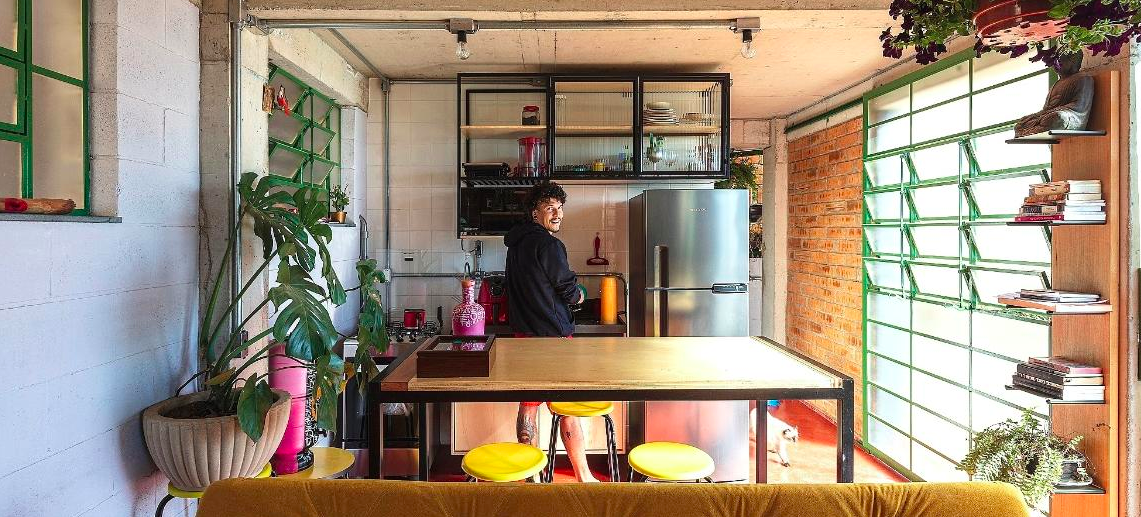
Coletivo Levante, responsible for the project, also celebrated the achievement:
“We are very happy with the result! First, thanks to everyone who stuck with us, voted, and helped put the favela on top of the world!”
“We hope that the Casa no Pomar do Cafezal project can inspire many others in the peripheries of Brazil. Here, the periphery is the center!”
LEARN THE STORY OF THE “HOUSE OF THE YEAR”
In the view of one happy resident, “My shack. To the world, the House of the Year 2023.”
And when we ask the architect Fernando Maculan, one of the authors of the work, he sums it up with humility:
“A house made of materials used in the favela, but with a construction system that allows more ventilation and lighting, besides other solutions that make it efficient.”
The Casa da Vila Pomar do Cafezal, which beat great names in architecture worldwide to win the title, was built by many hands on an angled plot of about 70 m² in the community in the south-central region of Belo Horizonte.
Some of them are from Coletivo Levante (@coletivo.levante), which signs the authorship of the house, uniting a team of architects, students, and engineers led by Fernando Maculan and Joana Magalhães, to elaborate projects, gather suppliers and supporters to make architecture in the periphery.
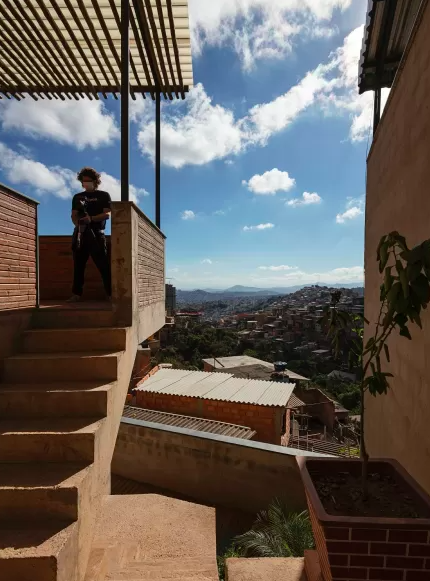
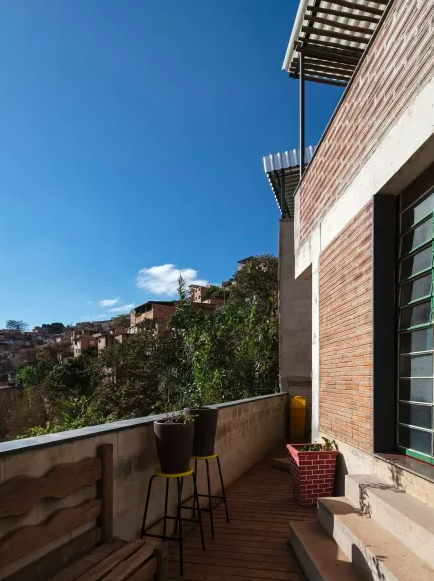
AN “EQUAL BUT DIFFERENT” HOUSE
From afar, the house camouflages itself in the landscape.
The 8-hole block, a classic in the communities, received sealing, and that was it: its facade was finished.
“But the brick was laid horizontally and reveals its crimped face, something uncommon on the hill, since laying the block upright is faster and makes the material yield more”, explain the architects, who did it differently, thinking of making the house cooler.
The block also appears as a ‘cobogó’ or combined with concrete blocks, showing that knowledge can transform an ordinary material into an efficient house.
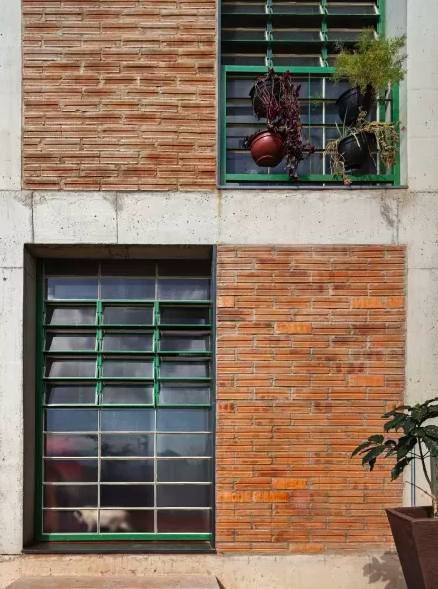
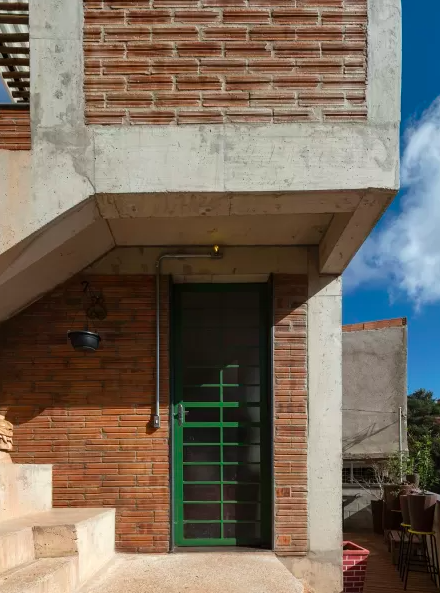
“We were concerned about carefully observing issues related to the flow of rainwater and its absorption in the terrain; to make little intervention on the ground; to offer generous natural ventilation and lighting, in addition to temperature control with light elements such as eucalyptus logs and vegetation. And, of course, to make the most of the view, which is extraordinary and cannot be seen from the asphalt”, they say.
“We used what is common in the house but with extra qualities that can be copied – yes, copied – by the neighbors,” says one of the architects, Fernando Maculan.
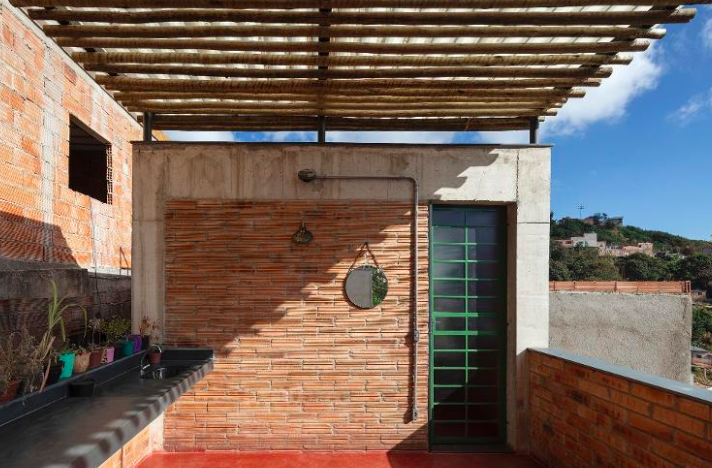
VOLUNTARY DONATIONS AND COMMUNITY WORK
Everything that involves a house is expensive. That is why Kdu raised funds for some of the stages.
Oddly enough, what costs the most is transporting the material from the driveway to the construction, according to the collective architects.
“We managed to get companies and suppliers to embrace the idea, but other things, like labor, need to be paid for,” says Amanda Castilho.

That’s when the mutirões (community projects) show their strength, which is very common in the favela.
“A bricklayer helps another build his house so everyone can have a home,” says Fernando.
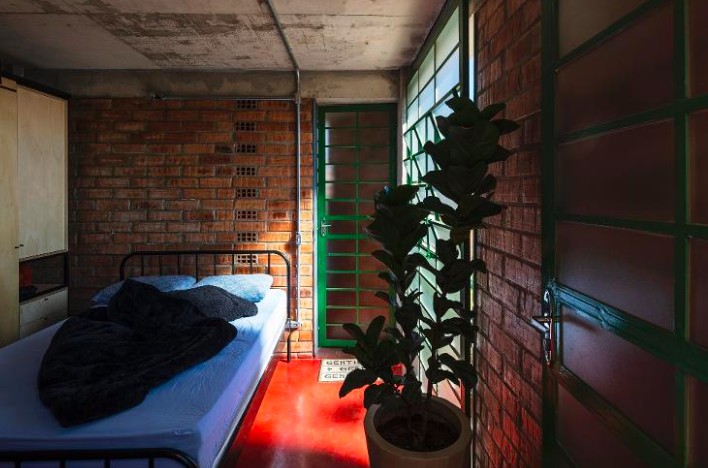
“Kdu is the manager of the cultural center Lá da Favelinha, a key person in the community who taught us a lot. You have to be predisposed to live what the favela is. To think the project from the inside out, and not the other way around,” he adds.
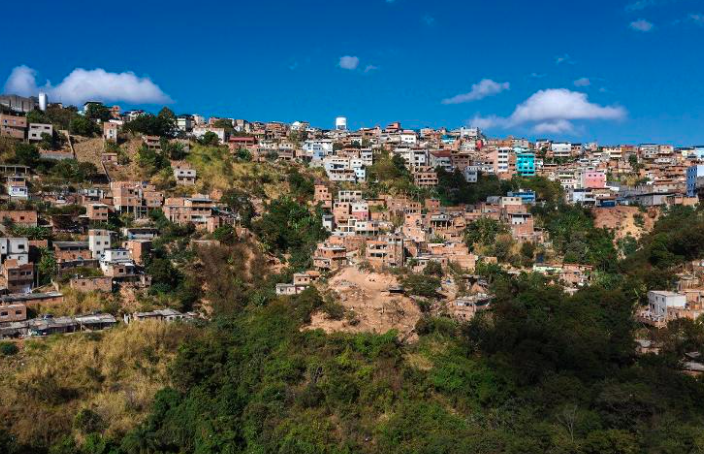
By winning the award, the group, which involves more than 10 professionals with projects in Rio de Janeiro, São Paulo, and Bahia, gains the strength to dream about more work in peripheral communities. Kdu himself, who baptized the collective, can’t stop celebrating:
With information from UOL

